
PD Dr. Simon Grabowsky
Research Group Leader / Forschungsgruppenleiter
Departement für Chemie, Biochemie und Pharmazie
- Telefon
- +41 31 684 42 81
- Telefon2
- +41 31 684 43 61 (Forschungsgruppen-Sekretariat)
- simon.grabowsky@unibe.ch
- Büro
- N232 / N232a
- Postadresse
- Freiestrasse 3
CH - 3012 Bern - Pers. Website
- grabowsky.dcbp.unibe.ch
Hands-on Workshop in Computational Methods in Crystallography
Learn from the experts! On September 9, 2025, participants get a practical introduction into computational methods in the solid state, especially for materials science. You can run your own calculations in the programs Crystal 23 and CP2K. Applications for the workshop at the CECAM headquarters in Lausanne, Switzerland, close August 5.
A practical introduction to synchrotron experiments
Researchers and beamline scientists will share their advice help you with questions at all stages: pre-experiment, experiments, and post-experiments. If you want to find a suitable beamline for your experiment or optimise your beamtime, come to the ECM 35 satellite workshop on August 25 in Poznań.
Start

Our main field of research is method development in quantum crystallography and application of the new methods to bonding analysis in inorganic and bio-organic chemistry.
News
News – 16.07.2025

ICDM10 in Durham
For the International Charge Density Meeting, Judith Howard captivated her audiance in the old halls of Durham University. Simon spoke on quantum crystallographic bonding analysis.
News – 01.07.2025

Congratulations!
Nina and Dea have successfully finished their Bachelor's theses and will continue to study for a Master's degree in Bern and at ETH Zurich. All the best!
News – 30.06.2025

Inside UNESCO
As President of the Swiss Society for Crystallography, Simon went to UNESCO in Paris and discussed pathways for cooperation and remote access for African crystallographic institutes.
News – 25.6.2025

Science on the Top of Europe
Simon and his work group went up Jungfraujoch to the visit the High Altitude Research Station. Prof Silvio Decurtins showed the scientific work done to document climate change at 3'500 metres.
News – 07.6.2025

Erice International School of Crystallography
This year's International School of Crystallography focused on Quantum Crystallography (QCr) and Simon introduced researches from across the world to his area of expertise.
News – 15.05.2025

Group hike up Mount Pilatus
For our annual trip we chose higher peeks and climbed Mt. Pilatus. At over 2000 metres, we enjoyed a fantastic view over Lake Lucerne.
News – 15.11.2024
Simon's keynote lecture
At the XX. Sagamore Conference, Simon held a keynote lecture on quantum crystallography in Delhi, India.
News – 02.11.2024

Simon to talk at the Indian Institute of Technology Delhi
At the department of chemistry, Simon has been invited to the research seminar to speak about "Super-electrophilic anions that bind noble gases".
News – 25.10.2024

Reunion at the University of Bremen
Five years after leaving the University of Bremen, Simon returned for a reunion with Lorraine Malaspina, Maksym Ponomarenko, Pim Puylaert, Malte Fugel, Dylan Jayatilika, Florian Kleemiß and Emanuel Hupf.
News – 12.09.2024

Simon new President of the Swiss Society for Crystallography
At the SSCr Annual Meeting in Basel Simon was voted its new president by the general assembly. He follows Pascal Schouwink and is excited to lead Swiss crystallography.
Team

Researchers
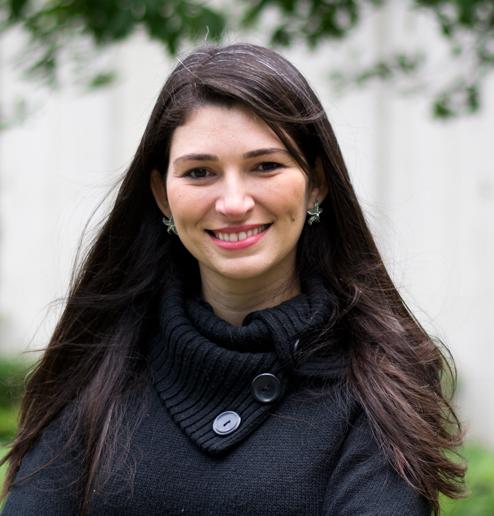
- Name / Titel
- Dr. Lorraine Andrade Malaspina
- Funktion
- Senior Researcher
- lorraine.malaspina@unibe.ch
- Telefon
- +41 31 684 43 90
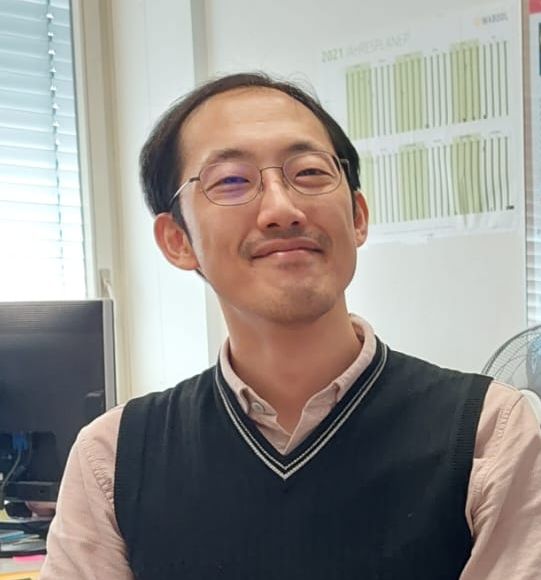
- Name / Titel
- Dr. Kanghyun Chu
- Funktion
- Post Doc
- kanghyun.chu@unibe.ch
- Telefon
- +41 31 684 42 73
PhD Student
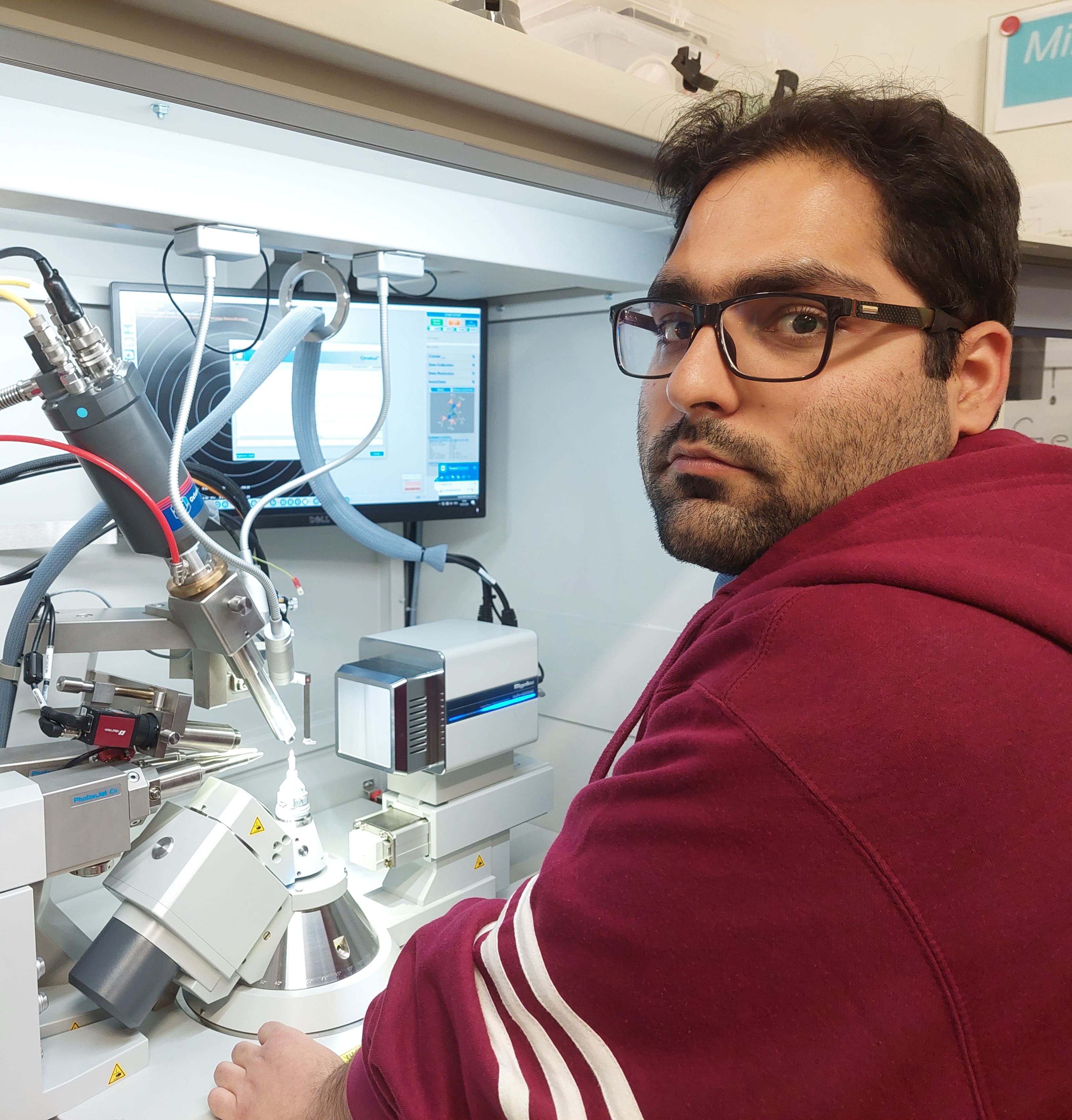
- Name / Titel
- M Sc Yaser Balmohammadi
- Funktion
- PhD student
- yaser.balmohammadi@unibe.ch
- Telefon
- +41 31 684 42 73
Master Students

- Name / Titel
- Samira Baumann
- Funktion
- Master Student
- samira.baumann@students.unibe.ch
- Telefon
- +41 31 684 42 73
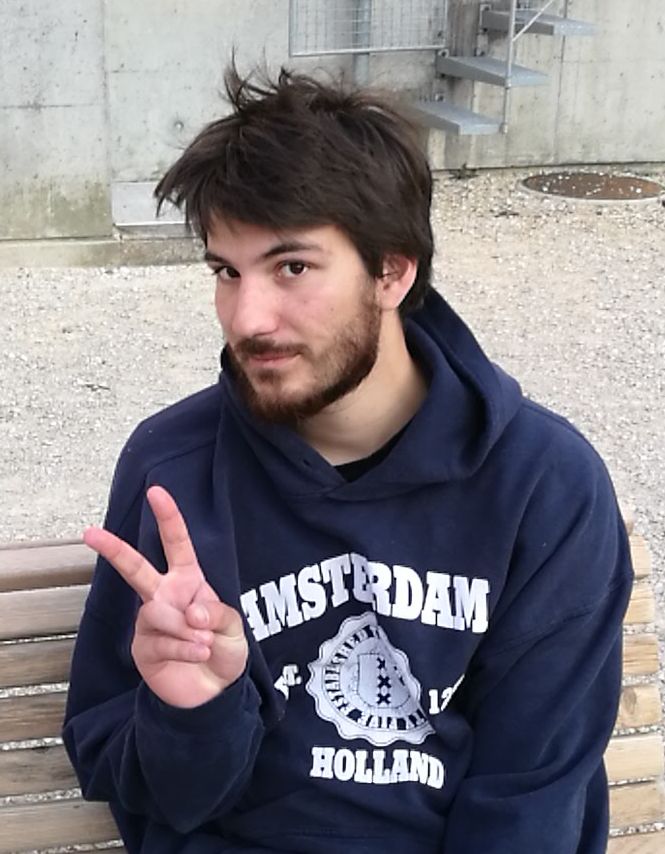
- Name / Titel
- Eduardo Metry
- Funktion
- Master Student
- eduardo.metry@students.unibe.ch
- Telefon
- +41 31 684 42 73
Bachelor Students

- Name / Titel
- Nina Krapf
- Funktion
- Bachelor Student
- nina.krapf@students.unibe.ch

- Name / Titel
- Dea Morina
- Funktion
- Bachelor Student
- dea.morina@students.unibe.ch
Technicians
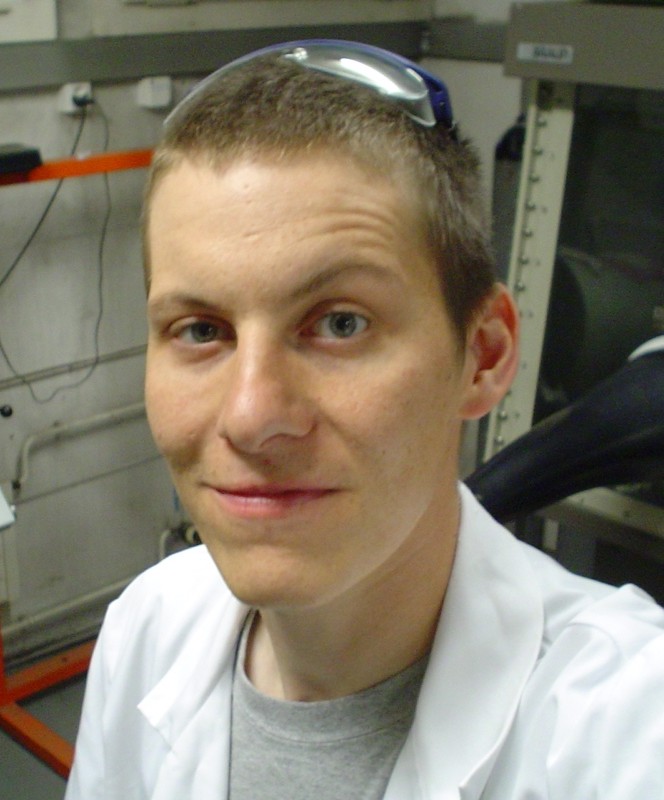
- Name / Titel
- Daniel Biner
- Funktion
- Lab Technician
- daniel.biner@unibe.ch
- Telefon
- +41 31 684 43 18
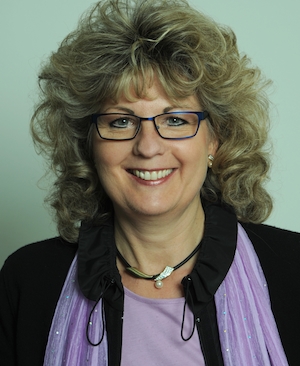
- Name / Titel
- Beatrice Frey
- Funktion
- Lab Technician
- beatrice.frey@unibe.ch
- Telefon
- +41 31 684 43 18
Alumni
University of Bern
- Dr. Ana Stucki-Mafud
- Sergey Fisher
now at Free University of Amsterdam - Sinas Furan
now at the University of Bremen - Dr Ravish Sankolli
- Dr Michał Andrzejewski
now at Paul Scherrer Institute PSI - Dr Florian Kleemiß
now at the University of Regensburg - Vasyl Stotskyi
now at Paul Scherrer Institute PSI
University of Bremen
- Dr Pim Puylaert
now at the University of Bremen - Arta Safari
now at MPI for Solid State Research, Stuttgart - Dr Malte Fugel
now at TÜV Nord, Hanover - Dr Rumpa Pal
subsequently University of Tsukuba - Erna Wieduwilt
now at the University of Lorraine - Justin Bergmann
now at European Spallation Source, Lund - Anneke Dittmer
now at MPI für Kohlenforschung, Mülheim an der Ruhr - Dr Maksym Ponomarenko
- Dr Emanuel Hupf
now at the University of Bremen - Dr Maxie F. Hesse
subsequently University of Bremen
The University of Western Australia
- Mingwen Shi
- Dr Joanna M. Krzeszczakowska, née Bąk
now at Jozef Poniatowski Fifth Secondary Comprehensive School, Warsaw
Research

Our main field of research is method development in quantum crystallography and application of the new methods to bonding analysis in inorganic and bio-organic chemistry.
Method Development: X-ray Wavefunction Refinement
Conventional methods for structure determination using single-crystal X-ray diffraction data neglect the deformation of the valence electron density, but only model atoms with spherical electron densities. However, it is exactly those valence deformations into bonding and lone-pair regions that are the heart of chemistry. Therefore methods were developed to determine the total electron density experimentally (multipole model, maximum entropy methods), which are unfortunately only accessible to experts. Our new method X-ray wavefunction refinement (XWR) employs quantum chemistry in order to interpret the diffraction experiment in a simple fashion. Its first step Hirshfeld Atom Refinement (HAR) makes localisation of hydrogen atoms from the X-ray data as precise and accurate as from neutron-diffraction data. The second step X-ray constrained wavefunction (XCW) fitting allows to extract crystal field effects, electron correlation and relativistic effects from the experimental data. We continuously improve XWR and work on a corresponding software (HARt implemented into Olex2).
Relativistic Effects in the Electron Density
In order to extract relativistic effects with our new method XWR from single-crystal X-ray diffraction data, we synthesise and crystallise organo-metallic molecular compounds bearing heavy elements of the 6th period (e.g., Pt, Au, Hg, Tl, Pb, Bi). Crystal quality must be exceedingly good, so that ultra-high resolution data sets can be measured at the synchrotron SPring-8 in Japan at very low temperatures (< 20K). Subsequently, the data are treated with the method IOTC (infinit order two component) during the crystallographic refinement. Moreover, we carry out many theoretical calculations on test molecules in order to separate effects such as electron correlation, polarisation, core deformation and relativistics from each other.
Electron-Density – Property Relationships in Inorganic Chemistry
We synthesise systematic arrays of compounds that only vary in a single substituent in order to correlate geometric with electron-density parameters across the array. This way, reactions or other chemical processes can be simluated through static crystallographic snapshots along a pseudo-coordinate. Each of these snapshots exhibits a complete experimental electron-density study so that deep insights into the electronic nature of the processes can be gained. Currently we work on penta-coordinated silyl naphtalene compounds peri-substituted with amines that represent an attacking group in a nucleophilic substitution reaction with the varying substituent at the silicon atom representing the leaving group. Other compounds of recent interest are siloxanes where we investigate the change of basicity relative to the Si-O-Si bond angle. The concept can be extended to many other systems and chemical processes.
CV
Academic Positions
- since 08/2019: Research Group Leader and Privatdozent at the Department of Chemistry, Biochemistry and Pharmaceutical Sciences at the University of Bern
- 10/2015 – 07/2019: Extraordinary Professor at the University of Bremen
- 09/2014 – 07/2019: Emmy Noether Research Group Leader at the University of Bremen
- 01/2014 – 08/2014: Assistant Research Professor at the University of Western Australia
- 01/2011 – 01/2014: Australian Postdoctoral Fellow at the University of Western Australia
- 10/2006 – 12/2010: Research assistent at the Free University of Berlin
Education
- 10/2019: Habilitation in Physical Chemistry (venia docendi) at the University of Bern
- 04/2019: Habilitation in Physical Chemistry (venia legendi) at the University of Bremen
- 10/2006 – 12/2010: Doctoral studies and dissertation (Prof Dr Peter Luger): "New Methods in the Analysis of Electron Density and Electron Localizability - Applications to X-O-X Systems (X = C, Si)", Free University of Berlin
- 10/2001 – 09/2006: Studies of chemistry (diploma) at the Free University of Berlin
Societies and Organisations
- Member of Commission on Quantum Crystallography of the International Union of Crystallography
- President of the Swiss Society for Crystallography
- Treasurer of Bernese Chemical Society
- Member of the European Crystallographic Association
- Member of Swiss Chemical Society
- Member of Gesellschaft Deutscher Chemiker
- Member of Deutsche Gesellschaft für Kristallograhie (DGK)
Publications
For a full list of publications, also see:
Researcher ID: H-6014-2012
ORCID: 0000-0002-3377-9474

Publications recorded in the new BORIS (Bern Open Repository and Information System) Portal:
| Publication | Year | Type |
|---|---|---|
| Loading... | ||
Teaching / Lehre
Frühjahr 2025
Quantenchemie (mit Prof. Dr. Natalie Banerji) - Vorlesung im Bachelor-Studium
Pharmazeutische Analytik (mit Prof. Dr. Stefan Schürch, Prof. Dr. Sönke Szidat, Prof. Dr. Julien Furrer) - Workshop zu Fallstudien
Herbst 2024
Inorganic Chemistry I (with Prof Eva Hevia Freire) - undergraduate course, lectures and excercises
Inorganic Chemistry II (in groups) - undergraduate course, lab class
Chemical Crystallography - graduate course, lectures
Symmetrielehre (mit Prof. Dr. Natalie Banerji) - Vorlesung im Bachelor-Studium
Universität Bremen
Allgemeine Chemie - Vorlesung im Bachelor-Studium
Theorie der Chemischen Bindungen - Vorlesung und Übung im Bachelor-Studium
Anwendung der Theoretischen Chemie - Vorlesung im Master-Studium
Quantum Crystallography - graduate course, lab
Quantenchemie - Übung im Bachelor-Studium
The University of Western Australia
Theoretical Chemistry - undergraduate course, tutorials
Structure Determination in Chemistry - undergraduate course, tutorials
Freie Universität Berlin
Mathematik I und II - Übung im Bachelor-Studium
Crystallography Service
Single crystal X-ray diffraction
Single crystal X-ray diffraction is a powerful technique, used to study the structure of solids (organic, inorganic or metallorganic). In particular, it provides the type and dimensions of a crystal lattice and the precise positions of atoms in the unit cell. The technique requires single crystal samples (no policrystals, no twinned) of at least 01 x 0.1 x 0.1 mm size. The experiment can be carried out in protected environment in a temperature range 90-400 K. The diffraction experiment normally takes one day of measurement and one day of crystal structure solution and refinement. The ARS team provides a crystallographic information file (cif) for visualisation and analysis, tables of atomic positions and bond distances, full description of the experiment in a format ready for publication.
More on our Analytical Research and Services.


